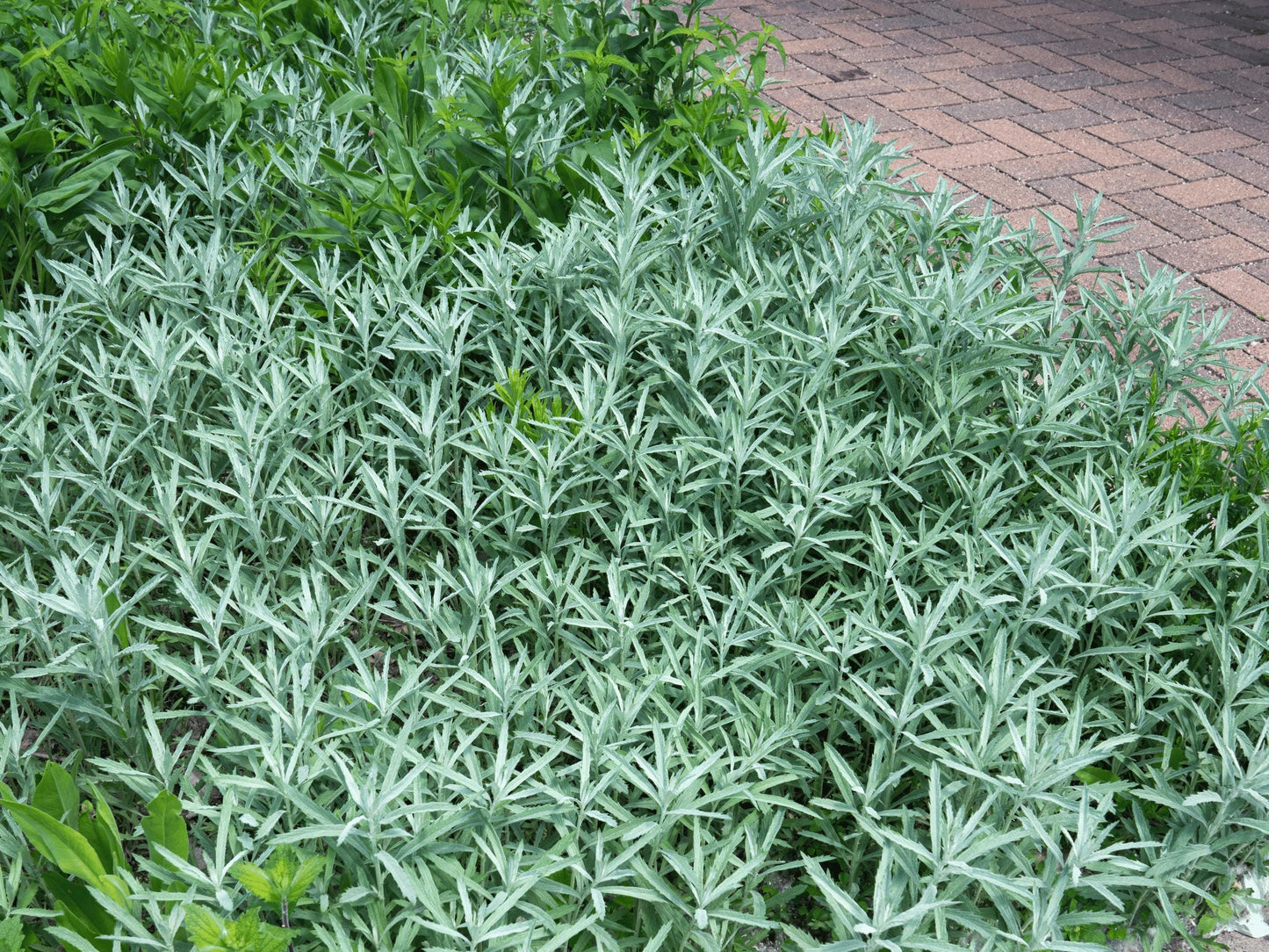Prairie Sage (Artemisia ludoviciana) was one of the most commonly used by Native American tribes, who had numerous medicinal and ceremonial purposes for Prairie Sage. A hardy heirloom perennial herb known for its silvery-green foliage and subtle, aromatic scent. This beautiful native wildflower thrives in dry, well-drained soils and full sun, making it an excellent choice for xeriscaping, native plant gardens, or pollinator-friendly landscapes.
Prairie Sage is valued for its drought tolerance and ability to thrive in poor soil, making it a low-maintenance addition to your garden. Prairie Sage also offers ecological benefits by attracting beneficial insects and is one of the host plants for the American Lady and Painted Lady Butterfly.
SCROLL DOWN FOR DETAILED GROWING INFO
All Nimble NiteCap Seeds are:
- Heirloom
- Organic
- Non-GMO
- Open Pollinated
- Untreated
- US Grown
- Growing instructions included
- Regular testing is conducted to uphold the highest germination standards, all the while employing appropriate seed storage techniques.
Sustainable Packaging & Shipping:
- NimbleNitecap seeds are packed in eco-friendly, compostable seed packets. Seed packets are printed in-house with vegetable-based inks on biodegradable, recycled materials. (Small plastic bags are infrequently used to prevent the loss of very small seeds.)
- All orders are carefully packed and shipped with tracking via USPS First Class (or Priority, if selected) in padded ECOENCLOSE recycled and reusable mailers, or recycled boxes to protect your items in transit.
- Most orders ship out the same or next business day! Please note that this time may be extended during peak season.
- FREE SHIPPING on all orders of $35 or more. Flat Rate shipping no matter how many packets you order.
Common Names: Prairie Sage, White Sagebrush
Latin Name: Artemisia ludoviciana
Type: Perennial Herb
Life Cycle: Perennial
USDA Zones: 3 - 9
Stratification: Cold stratification recommended for spring planting
Germination Ease: Moderate
Sunlight: Full Sun
Moisture: Low, drought-tolerant once established
Soil: Well-drained, sandy or loamy soils
Height: 24-36 inches
Spread: 18-24 inches
Color: Silvery-green foliage
Bloom Season: Late Summer
Companion Plants: Lavender, Coneflower, Yarrow (Prairie Sage benefits from these companion plants, and together they create a beautiful, pollinator-friendly garden.)
Potential Toxicity: Non-toxic
Climate Adaptability: Thrives in dry, hot climates and is highly drought-tolerant once established
~ Sowing ~
When to Sow Outside:
Sow directly outdoors in early spring after the last frost, or in late fall for natural stratification. If sowing in spring, cold stratify the seeds.
When to Start Inside:
For spring planting, cold stratify seeds by placing them in the refrigerator for 4-6 weeks. Start indoors 6-8 weeks before the last frost and transplant when the soil is warm.
Days to Emerge:
14-21 days
Seed Depth:
Surface-sow seeds, pressing them lightly into the soil; do not cover, as light aids germination.
Seed Spacing:
Space seeds 12-18 inches apart.
Hardiness:
Prairie Sage is frost-tolerant and hardy in cold climates.
~ Growing ~
Soil:
Prairie Sage thrives in well-drained, sandy, or loamy soils and can tolerate poor soil conditions. Adding organic matter is beneficial but not required.
Watering:
Water sparingly once established. Prairie Sage is drought-tolerant and prefers dry conditions, so avoid overwatering.
Light and Temperature:
Grow in full sun for best results. Prairie Sage thrives in hot, dry conditions and can handle a wide range of temperatures.
Maintenance:
Low-maintenance plant. Cut back in early spring to encourage new growth. Can spread by rhizomes, so keep an eye on its spread if needed.
Container Friendly:
Can be grown in large containers with good drainage, but Prairie Sage prefers being in the ground where it can spread naturally.
~ Harvesting ~
When to Harvest:
Harvest leaves when they are fully grown, typically in early summer. The best time to harvest is just before the plant flowers.
How to Harvest:
Snip the leaves or stems off with sharp scissors or pruning shears. Regular harvesting will encourage bushier growth.
Drying and Storing:
Leaves can be air-dried by hanging them in a cool, dry place. Once dry, store in an airtight container for up to a year.
Edible Use:
While Prairie Sage has been used medicinally, it is not commonly used for culinary purposes. Historically, it has been used in teas and smudging ceremonies.
~ Seed Saving ~
Seed Collection:
Allow seed heads to mature and dry on the plant. Once they turn brown, collect seeds by hand.
Seed Cleaning:
Remove seeds from the dried flower heads and air-dry them completely before storing.
Seed Storage:
Store seeds in a cool, dry place. Seeds remain viable for 1-2 years if properly stored.
~ Additional Information ~
Forage for Pollinators:
Prairie Sage is highly attractive to bees, butterflies, and other beneficial insects, making it a great addition to a pollinator garden.
Origin:
Native to North America, Prairie Sage has been a part of indigenous plant use for centuries, especially for medicinal and ceremonial purposes.
Nomenclature:
The genus name *Artemisia* comes from the Greek goddess Artemis, reflecting the plant's historical association with healing.
History:
Prairie Sage has long been used in Native American cultures for smudging, medicinal purposes, and as a protective herb. Its silvery foliage and drought tolerance make it a modern favorite for xeriscaping and native plant gardens.
Potential Toxicity:
Non-toxic to humans and animals.
Climate Adaptability:
Prairie Sage is highly adaptable to dry, hot climates, making it perfect for drought-prone areas and xeriscaping.



















